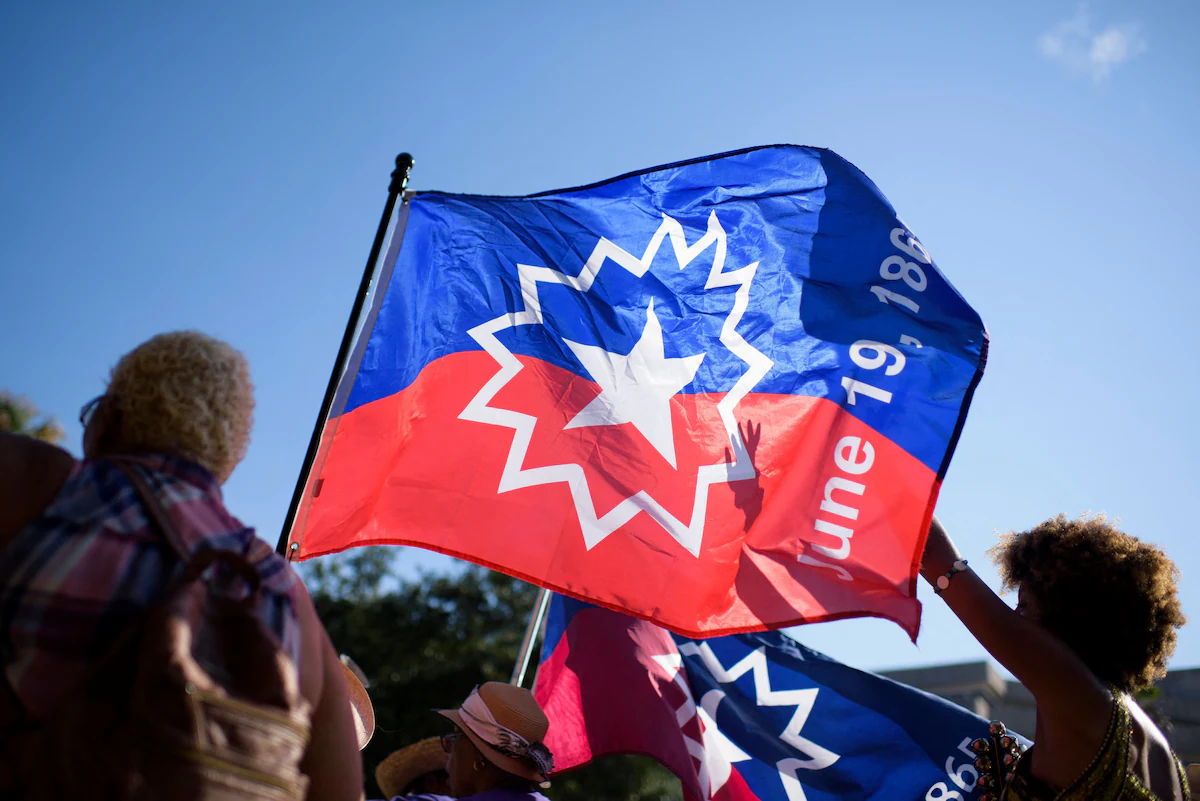
During the pandemic, after the killing of George Floyd in 2020, cities all over the country were uprooted with swarms of people marching the streets in protest of Black Lives Matter, a movement that though fraudulent itself, helped move the needle toward the recognition of Juneteenth as a national holiday.
Before 2020, this holiday existed at the margins. Per usual, it takes America a while to catch on to “black joy” and to understand what freedom means to many of us. I grew up celebrating Juneteenth the same way we celebrated the Fourth of July. The smell of tri-tip steak would billow from the folds of large cast iron smokers as we lined the streets of downtown Vallejo, California to view the African dance troupes that would elegantly sway and step up and down the streets towards the marina. The marina is where the grassy walkways were filled with vendors that sold bean pies, pan-African cloth, incense, oversized, loaded baked potatoes, African-inspired accessories, books by Black authors, and more.
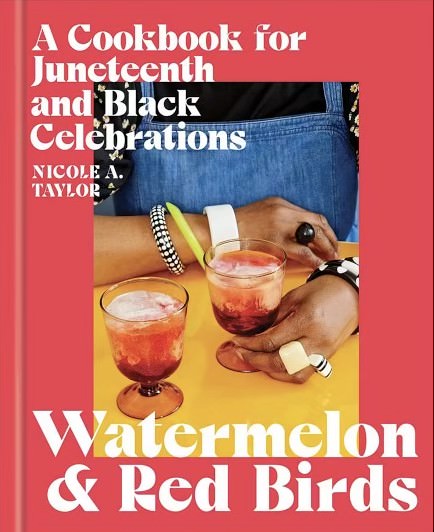
After the festival, we would go back to our house to clean it immaculately and prepare for a dinner with our cousins. Every holiday four of my maternal cousins and six of my paternal cousins would come over for a barbecue. My parents would grill ribs, chicken, seafood, and we would enjoy a host of southern desserts and sides. They cooked so much that my eldest brother would offer some of the neighborhood friends to come over. Together we would either entertain ourselves with a movie, or girl talk in the rooms while the guys played with water guns or video games.
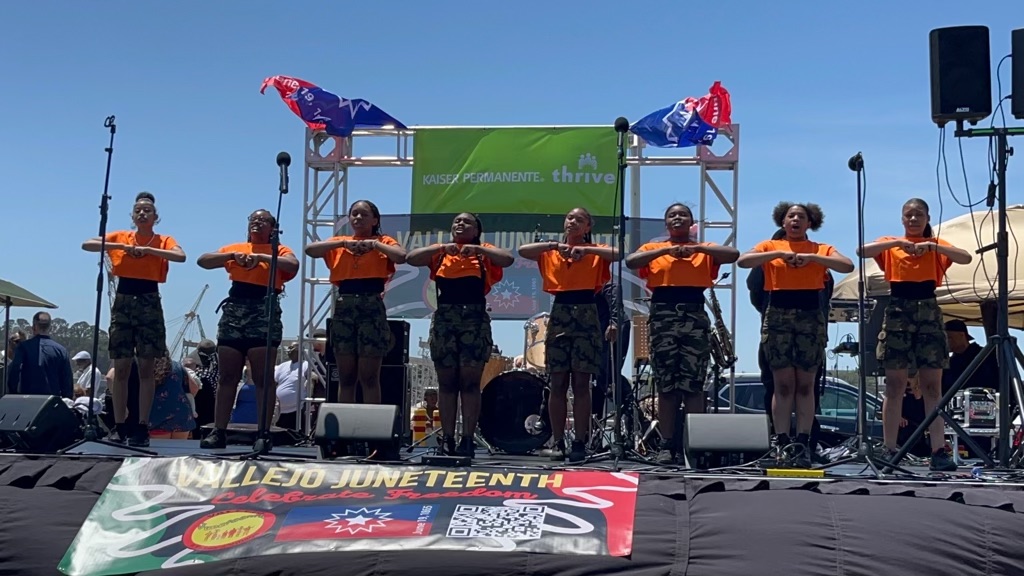
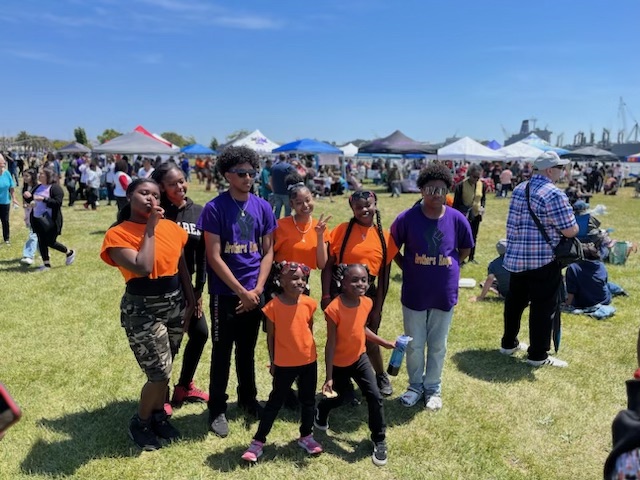
My mom would explain the history of Juneteenth to us often, although I don’t remember her telling us it started in Galveston Texas, in 1863, or mentioning “Freedom Eve.” She would simply tell us it was the day the emancipation proclamation was effective and the enslaved were free. But she would emphasize that our ancestors still weren’t completely free because of what happened in the years following. Systemic racism is so pervasive in our culture, and it all stems from decades of enslavement that built the country we live in today.
To me, Juneteenth is one of the most important events in our nation’s history. On “Freedom’s Eve” or the eve of January 1, 1863, the first Watch Night services took place. On that night, enslaved and free African Americans gathered in churches and private homes all across the country awaiting news that the Emancipation Proclamation had taken effect. The cloth most notable to Black people during the emancipation era was unbleached linen or chintz cloth. These were not “well cared for,” quality fabrics or decorative. I’ve always associated Juneteenth (as well as Kwanzaa) with Kente cloth. It is ubiquitous all over the Bay Area, and sometimes how we identify individuals who are historically aware of their culture and heritage. ‘Pan-African’ is an attempt to build a community in brother or sisterhood that aligns with people of African descent as a way to connect the aspirations and goals of our people around the world. The Ghanaian textile (Kente) made of hand-woven strips of silk and cotton draped over the body in a toga-like fashion adorns the Black body as a way to reclaim our power. Concurrently, the Dashiki is also a display of this rich history of community and anti-colonialism. Dashiki textiles are rooted in the Yoruba tribe from Western Nigeria, they are made of hand-woven strips of cloth. The word Dashiki comes from the root word danshiki which means a short, sleeveless tunic worn by men. Present day, this piece of cloth is manipulated to be made as a gender neutral garment, with or without sleeves, as a tunic dress, or even as a poncho. The make-up of the design has always been a bold symbol that the individual suiting up in this piece is making a statement that they align with Black/African culture.
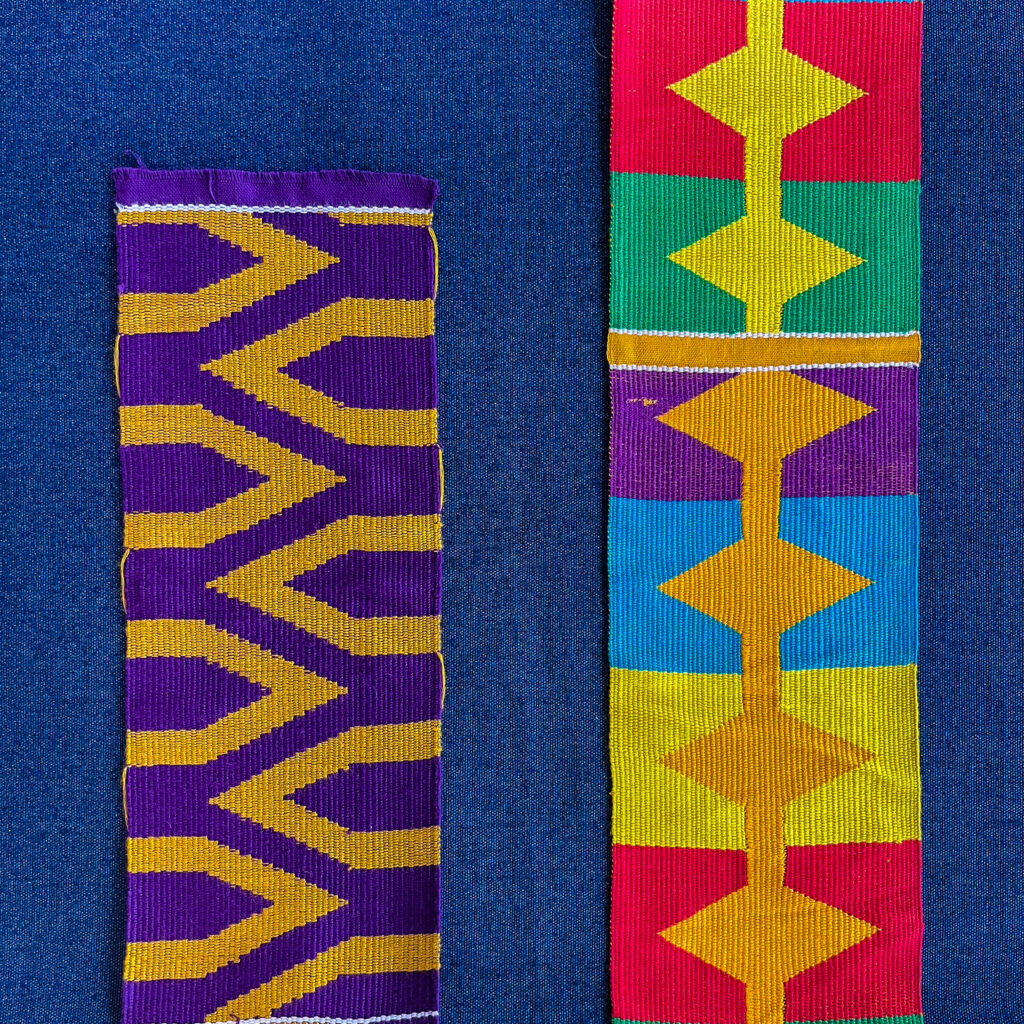
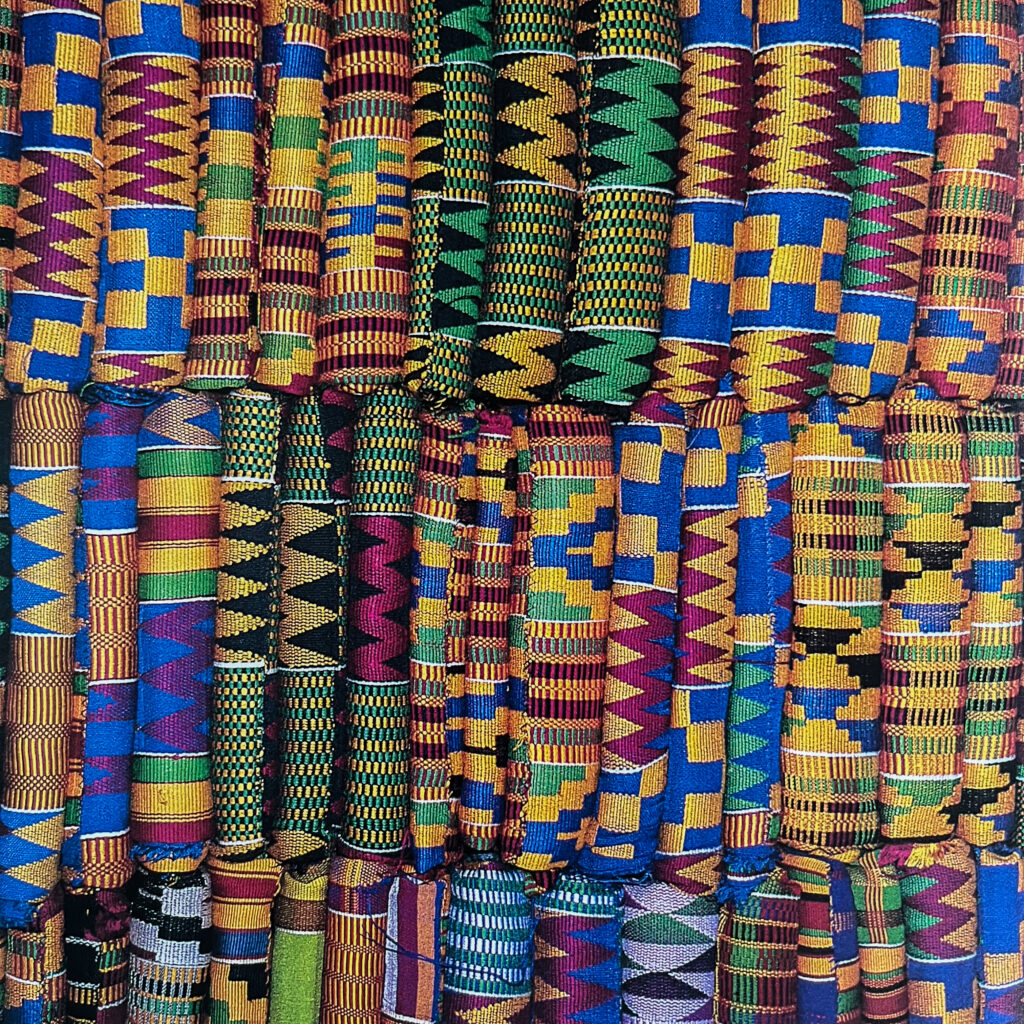
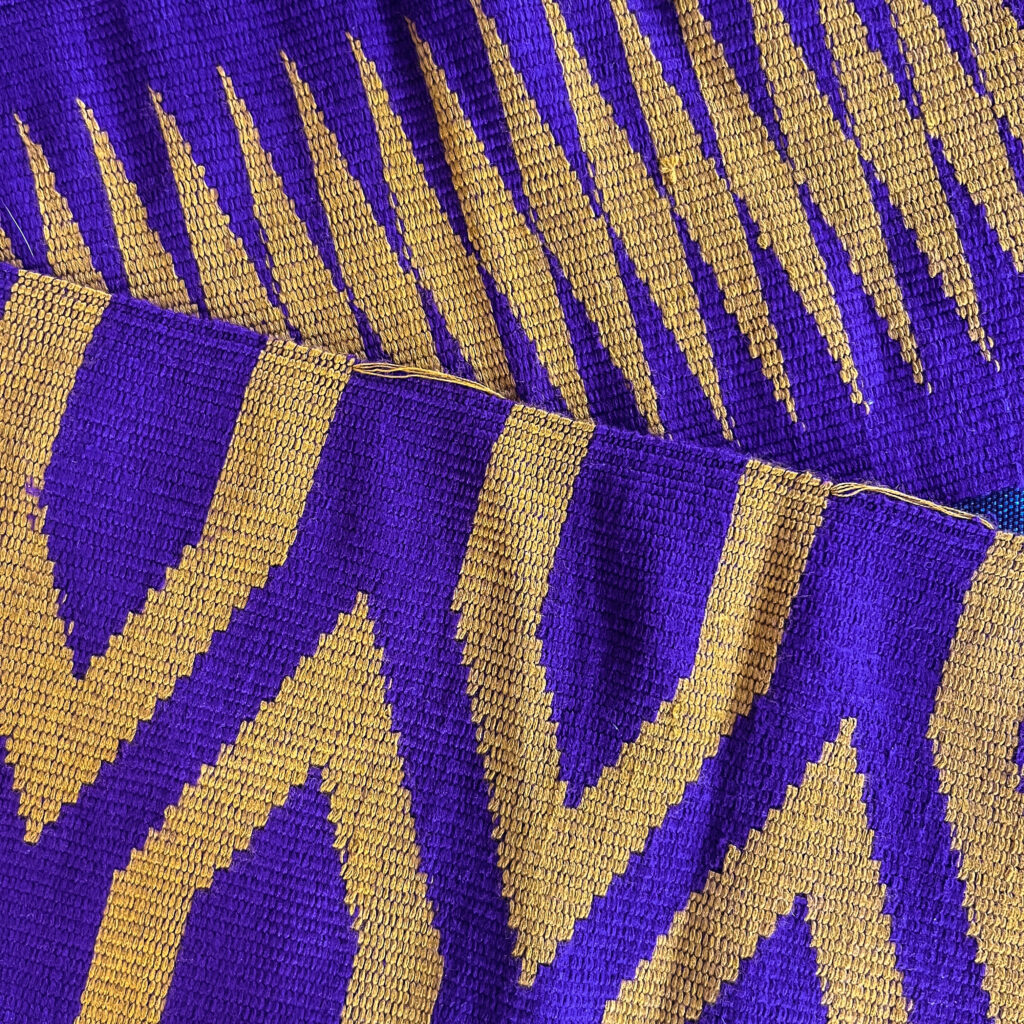
In my textile practice, freedom means exploring the history and heritage of my culture through natural dye and the distressing of fibers, particularly cellulose. I am also an intuitive maker. The flow of macrame techniques come through my hands quite naturally. It is not just knotting but also braiding, wrapping, and sewing on adornments that represent the past and the future of my Black heritage. Often in my work, I dance through time while making oversized feathers that reference Africa and the ceremonial. To some, this work can be bold and unruly, but others can see the diasporic story being told.
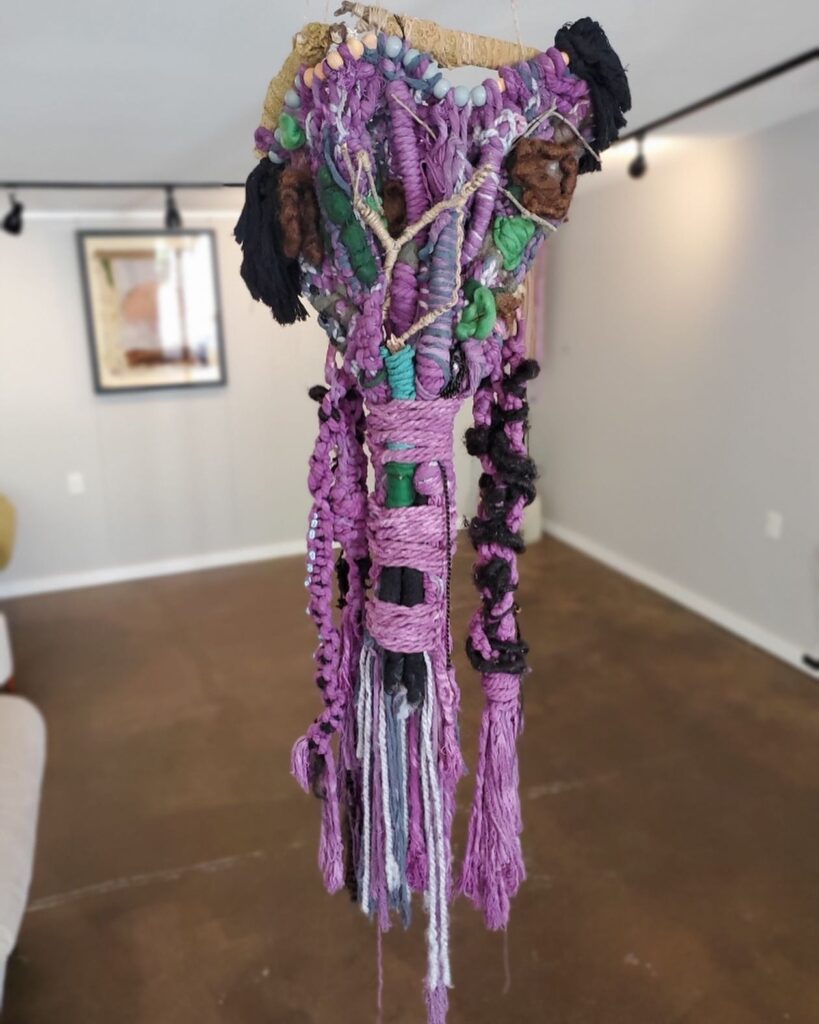
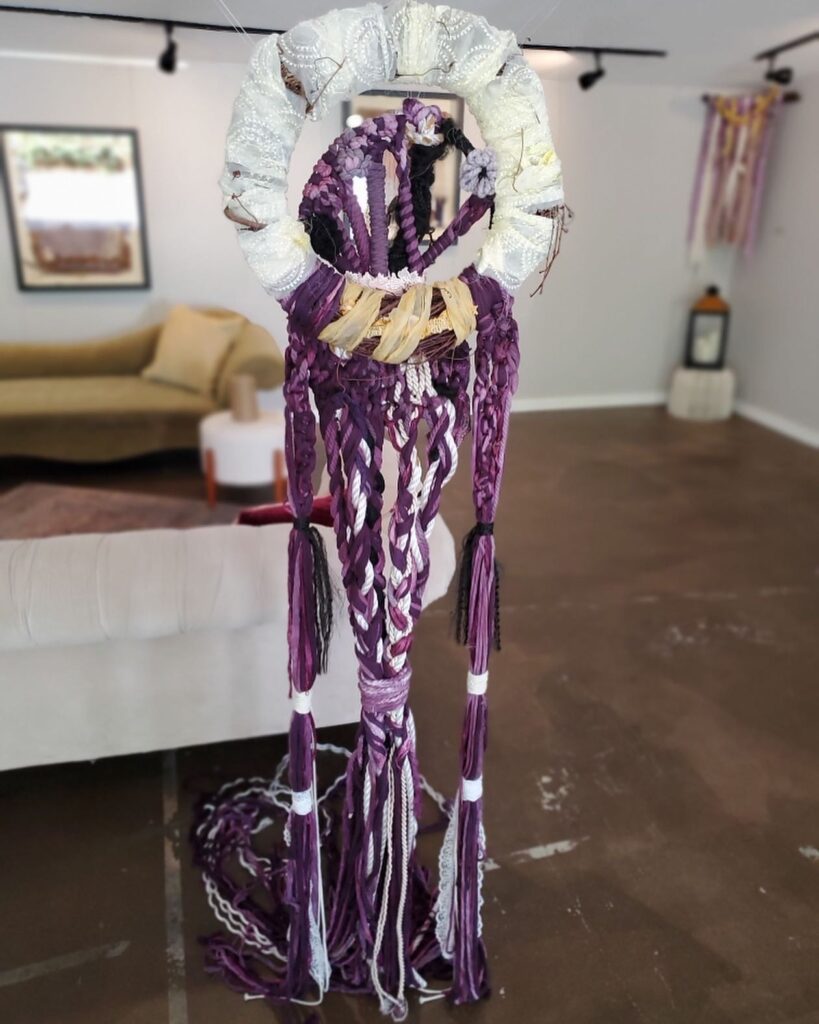
In summary, the way I grew up celebrating Juneteenth has informed an art practice that recognizes history, culture and shapes a better future. I believe the more we unite and acknowledge those who live and have lived at the margins, the more we can heal, commune, and have open conversations that tear down false ideals and barriers that exist. Furthermore, we can’t make a new future unless we look to the past to move forward and that is what I do in my textile art practice.
FURTHER READING AT TATTER
Kente Cloth: History and Culture by Ernest Asamoah-Yaw, Osei-Bonsu Safo-Kantanka (call number: NK8889.6.G5.A83)
Wrapped in Pride: Ghanaian Kente and African American Identity by Doran H. Ross (call number NK8889.6.G5.R67)
Spider Weaver: A Legend of Kente by Margaret Musgrove, Julia Cairns (call number PZ8.1.M965 SP)
ABOUT JOANNA BELLAMY JORDAN (from Vallejo, CA)
I am a designer and textile artist living in Jersey City, NJ. I earned a masters in fashion marketing from LIM college, 2015 and then an MFA from Savannah College of Art and Design, 2022.
My work is steeped in the dance between the past and the future, it’s spiritual, technical and intuitive. I age fibers to create stories about my personal heritage that can also relate to many indigenous cultures. The past knowledge informs future change.
